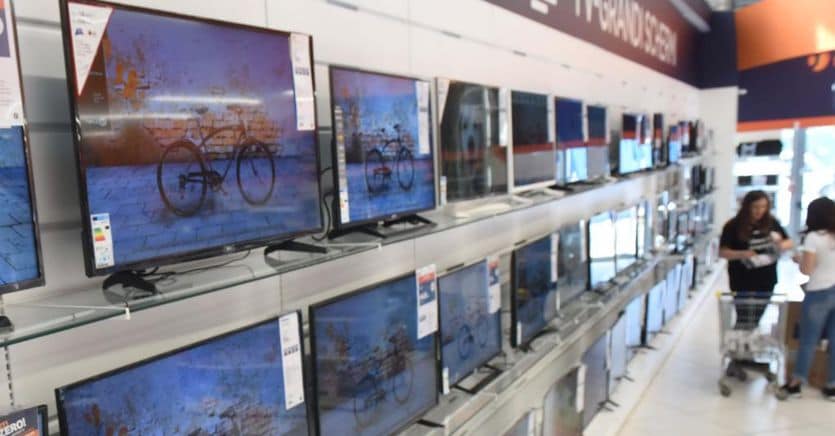The Minister of Economic Development Giancarlo Giorgetti signed the implementing decree that makes the TV scrapping bonus operational, which supports citizens in the purchase of televisions compatible with the new technological standards of digital terrestrial transmission Dvbt-2 / Hevc Main 10. Differently of the previous incentive, which still remains in force and is therefore cumulative for those who meet all the requirements, the TV scrapping bonus is aimed at all citizens as it does not provide for ISEE limits. In particular, a bonus will be recognized for the purchase of a television for each household until 31 December 2022.
How to get it
The new technology (Dvbt-2 / Hevc Main 10) will improve the quality of the signal and make room for high definition broadcasts. The benefit consists of a 20% discount on the purchase price, up to a maximum of 100 euros, which can be obtained by scrapping a television purchased before 22 December 2018. Scrapping can be carried out when purchasing the new television. , delivering the old one to the dealer, who will then take care of the disposal of the appliance and obtain a tax credit equal to the discount granted to the customer at the time of purchase of the new appliance. Another way to scrape the old TV is to deliver it directly to an authorized ecological island. In this case, a form will certify the delivery of the appliance, with the relative documentation to request the discount on the purchase price.
Loading…
Is your TV compatible with the new digital terrestrial?
To verify that your device is suitable, you need to look at numbers 200 and 100 on the remote control. If the message “Test HEVC Main10” appears, everything is ok.
If the screen is black or the channel does not tune, to continue watching programs from June 2022, you will have to buy a new TV or a decoder suitable for the standards. It should be remembered that all TVs purchased after January 1, 2017 were required by law to have the DVBT2 decoder and decode the HEVC video format. So let’s say that those who have bought a TV who have had a TV for about three years should have no problems. However, if you have purchased a super-TV there may be problems: pay attention that in addition to the DVB-T2 standard, the HECV video format is also supported. If this were not the case, we must change.
What to choose?
From the 90s to today, everything has changed in the world of televisions, from formats to screen technology (cathode ray tube, plasma, LCD…) to the functionality of the device. However, passing from the analogue to the digital era, one factor has not changed: the best TV is the one that best meets the needs of those who use it, responding to a subjective choice in terms of aesthetics, performance and (of course) costs. Much of the innovation that has marked the evolution of this “device” in the last 10/15 years, since the dream of 3D diving without stereoscopic goggles has been wrecked forever, we can see it in the panels.
The dimensions
When turned off they look very similar (large, ultra-thin, without edges) but once they are turned on, some differences highlight it. Let’s try to explain them. The starting point can be OLED, a technology on which Lg first bet (the 88-inch Z1 8K model is the “non plus ultra” of the series and costs 27 thousand euros) followed by Philips, Sony, Panasonic and a few others. The choice of size is of fundamental importance and depends on several factors. With the new panels there are no more precise rules, but choosing the largest TV does not always prove to be the right choice. So if the house is small, stay calmly under 50 inches, without shame Those who do not want to give up this format with 4k resolution must take into account a distance of the sofa from the TV of at least two meters. For a 75 inches, to do another example, you must have at least three meters.
